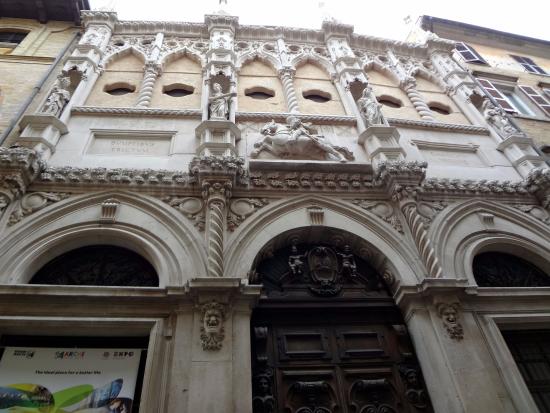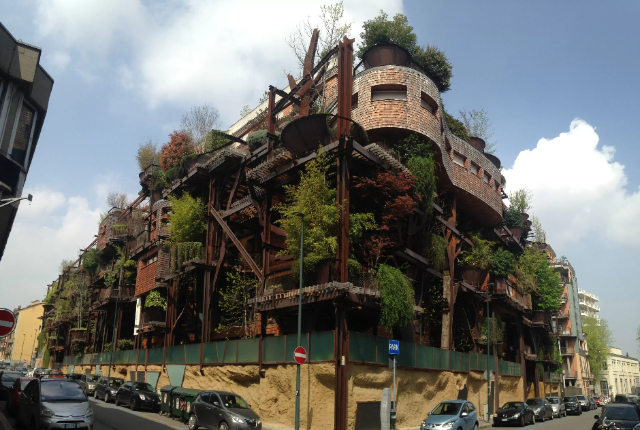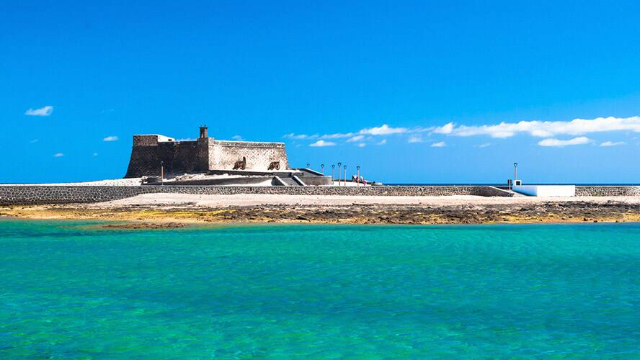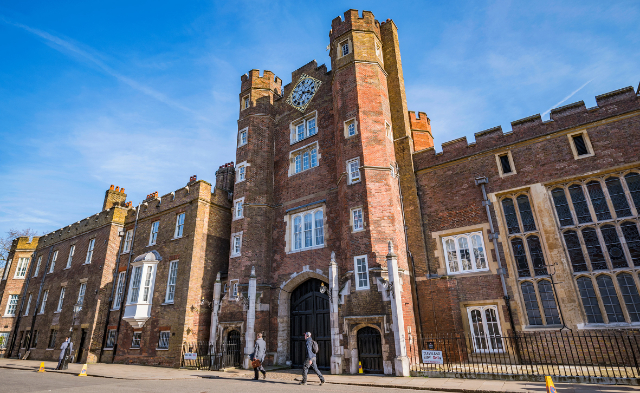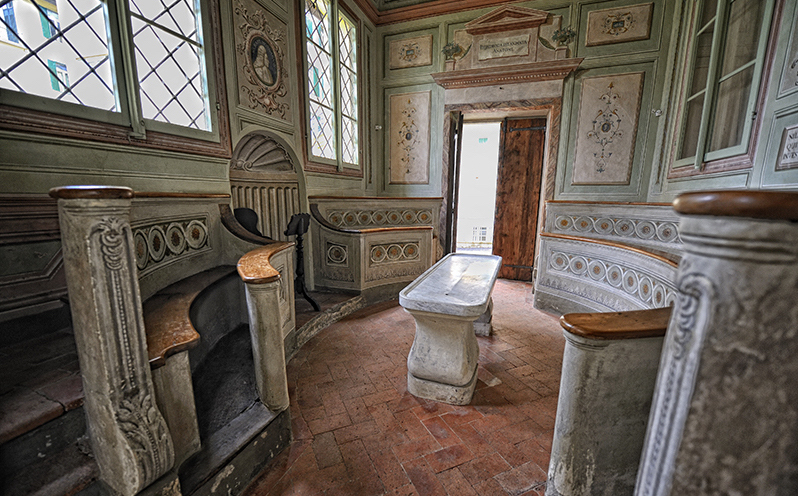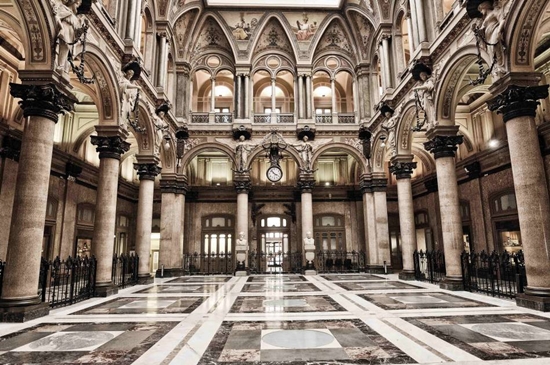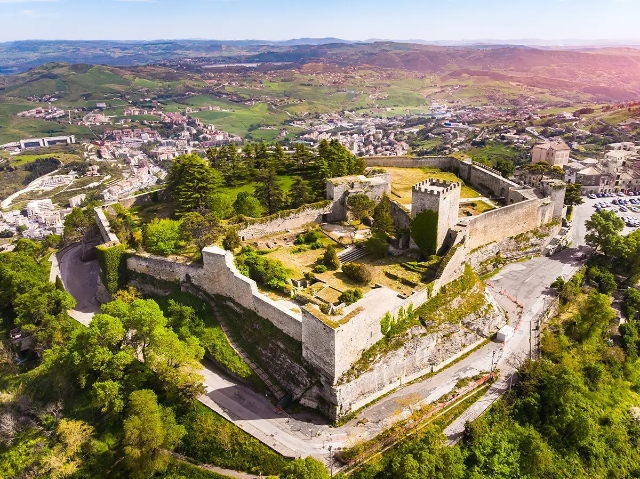Loggia dei Mercanti was built in 1442 by the architect Giovanni Pace called Sodo, in a very prosperous period, from an economic point of view, for the city; the palace is located very close to the port, which has always been the fulcrum of the intense mercantile exchanges essential for the economy of Ancona. It was intended to create a place for merchants’ meetings and where they could freely deal with their trade.
The façade, in Venetian Gothic style, is by the architect Giorgio da Sebenico who worked there from 1451 to 1459. Divided into three parts by four columns in relief, each one ending with a pinnacle; each one contains a statue representing four cardinal virtues: from left to right they are: Hope, Fortress, Justice and Charity. The two lateral parts have large windows in coloured glass in the lower part in the shape of a concave ogival arch, closed since 1758 for static reasons. In the upper part there are blind mullioned windows and, in the central part, there is a statue of the heraldic knight of the coat of arms of Ancona.
The building designed by Giorgio da Sebenico originally had no windows on the ground floor, neither towards the street nor towards the port, as its name of loggia still indicates. In addition, the mullioned windows on the first floor were open, and only later were they plugged, for static reasons.
A fire occurred during a carnival theatrical performance in 1556, made it necessary a remake made by Pellegrino Tibaldi between 1558 and 1561; he closed with fixtures the openings on the ground floor, making three round arches under the Gothic arches, and frescoed the vault of the inner hall.
At the end of the 18th century the French government that occupied the city donated the property of the building to the Chamber of Commerce, but this deed was not recognized after the restoration of the papal dominion. Only with the annexation to the Kingdom of Italy did it return to the Chamber of Commerce.
